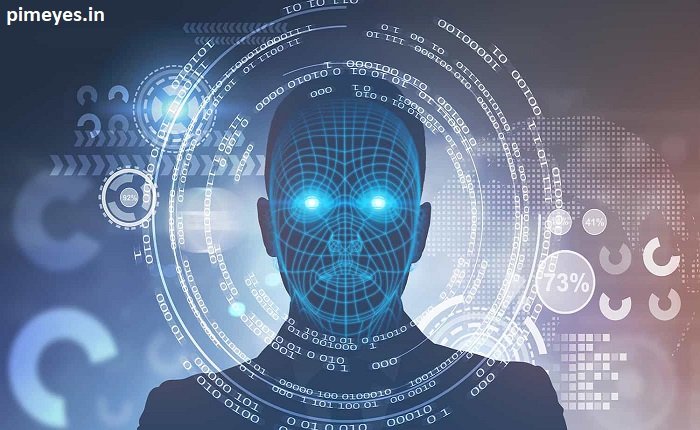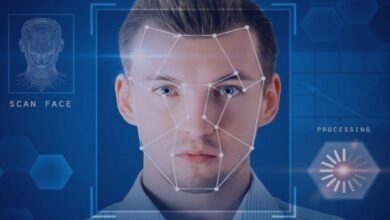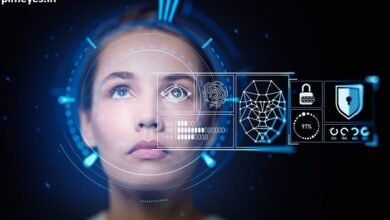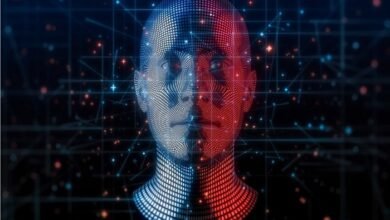Unleash the Power of Face Search Person by Photo Instantly!

Law enforcement agencies, along with various applications and websites, use it daily. Leveraging artificial intelligence and face detection algorithms, this technology has become widely adopted in sectors from law enforcement and security to social media. In simple words, a face search person by photo works with the features of the face creates a faceprint, and then identifies it using the images on the database or the web.
It all begins when a user submits an image, after which the software detects certain facial features like the distance between the eyeballs and the contour of the jaw, nasal cavity, and other identifiers. Those features are matched against millions or even billions of images within databases, enabling the system to detect matches, which culminate in mobile apps, social media platforms, and even retail environments.
How Does Face Search Person by Photo Work?
Face Search Person by Photo Rei and How It Works At its core, Face Search Person by Photo is an advanced algorithm that can pull unique features out of a face. These traits are known as “facial landmarks” which include prominent features like the curve around the eyes, nose, and lips, and even the general face shape. These traits are then encoded in numbers and stored in “faceprint.”
When a faceprint is matched, it compares the system with other pictures in a matching database that includes their respective face prints. Artificial intelligence and machine learning make it possible to refine and improve the accuracy of the system over time as well. Many popular websites like Google Images and PimEyes provide face search capabilities that allow searching for persons by photo.
But not all face search technologies operate the same way. Some systems just compare images against each other, face to face; others have other parts of the search, other data points, like metadata (location, time, etc.) Whether by using a dedicated system or an integration, searching face person by photo is a vital tool for anyone requiring expedited identification across large datasets.
Applications of Face Search Person by Photo
Face search person by photo use cases are numerous and diverse. A rule-breaking ubiquitous application of facial recognition, is in law enforcement, to identify criminals, missing persons, or witnesses in public spaces [6]. Police can get great leads by simply searching a database for a particular person’s picture. It is a great way to solve a crime.
On the private side, companies are tapping into face search for marketing, customer service, and fraud prevention. Retail companies can use Facebook search to follow customer behavior in the physical store or to improve their loyalty programs. Social media companies leverage this technology as well for features such as automatic photo tagging, although this has drawn concerns in certain parts of the world on privacy.
Face search person by photo also extends to healthcare beyond security and commercial applications. Medical researchers and institutions are experimenting with facial recognition for tasks such as early detection of genetic disorders or for monitoring the health of patients. The healthcare sector is using this tool in both diagnostic and security, emphasizing the versatility of the technology.
Privacy Concerns with Face Search Person by Photo
Face searching person by photo has its advantages, but it also presents a significant privacy issue. The idea of “surveillance capitalism” is one of the biggest problems of our time — the way companies collect enormous amounts of data on individuals without their knowledge or explicit consent. Many worry that it could be deployed as a tool for tracking individuals without their consent, jeopardizing their autonomy.
In some cases, people’s faces are being searched and matched without their consent, leading to unwanted public exposure, harassment, or identity theft. As platforms like PimEyes make it possible to conduct almost instantaneous searches based on photographs, anyone with a photo of you could, in theory, locate information about your home address, social connections, and even employment history.
These privacy implications have also raised global concerns among governments, prompting tighter regulations concerning face search technology. For instance, when it comes to GDPR, the European Union has robust policies around biometric data, such as facial recognition, with certain provisions prohibiting the use of this data collection without express consent from the individual.
The Legal Landscape of Face Search Person by Photo
As technology for searching by photo of a face matures, legal structures are still catching up. The legality of face search differs from country to country, even though face search has become routine in everyday life in many places. Some countries allow law enforcement agencies to use this technology to identify suspects, while others severely restrict usage by privacy laws.
For example, the use of facial recognition technology by law enforcement has become a controversial topic in the United States. Several cities have placed bans on government use of face searches, for fear of surveillance overreach. In contrast, some countries have introduced comprehensive legislation to protect citizens’ biometric data, focusing on transparency, consent, and accountability.
Along with worries of government snooping, face search for commercial reasons is also regulated. Companies that use this technology, for marketing or customer engagement, are required by laws to obtain user consent before using or storing any data. Noncompliance with these can lead to hefty fines and legal trouble.
Benefits of Face Search Person by Photo
There are clear benefits to the face search person by photo technology despite the privacy concerns. Face search can be a game-changer in law enforcement. It enables authorities to quickly identify criminals or suspects by matching their photos to a massive and deep database of images. This may speed up investigations and allow for the quicker arrest of suspects, which is in the interest of public safety.
Face search can provide an augmented experience for customers in business. One of the best uses of biometric data is that it can help retailers run personalized marketing campaigns through customer identification and special promotions. Face search can also be used to improve security in physical stores, by using it in conjunction with cameras in the store to flag any suspicious activity, or to identify if known thieves are in the store.
Healthcare Also Wins – That’s Where Face Search Can Also Have a Positive Impact Genetic disorders, which are sometimes flagged by specific facial features, are also being explored for diagnosis through facial recognition. Additionally, it is utilized to enhance patient safety by enabling biometric identification in healthcare centers.
Future of Face Search Person by Photo
Face search person by photo is here to stay, and the future looks exhilarating with constant innovations happening across the globe. A striking trend in face search evolution is performance improvements through AI-led features like neural networks and deep learning. Through this, these technologies will be able to support face recognition systems in adapting to new environments, processing more extensive datasets efficiently, and decreasing the extent of errors in face recognition systems.
Another future direction for face search is real-time identification. Face search may even find its way into everyday devices such as smartphones, cameras, and smart glasses, as the technology becomes more pervasive. Data would have to be trained up to 2030 October. This would lead to a world of “always-on” identification, where people are constantly scanned and identified, raising an even greater array of ethical and privacy concerns.
In addition, the ability to integrate face search with other technologies — such as emotion recognition or gait analysis — could pave the way for novel types of tailored services. Yet, it is also a source of concern where over-surveillance and misuse are potential risks, so this will play a big role for regulators in the future.
Ethical Considerations of Face Search Person by Photo
There are a lot of ethical considerations behind a face search person by photo. We also examined how the misuse of the technology can potentially lead to harmful impacts, including discrimination or exploitation. Face recognition algorithms, for instance, are biased and perform badly for people of color, women, and other marginalized groups. This is a huge problem because it can cause false positives, especially in law enforcement settings.
Moreover, constant surveillance will inhibit the freedom of people in public spaces. There is a fine line between safety and privacy and many believe that the risks are greater than the outcomes.
In conclusion, as technology forges ahead, the challenge will lie in balancing the advantages of face search with the ethical issues it introduces. We need policymakers, technology developers, and advocacy groups to come together to establish clear guidelines to ensure security is not at odds with protecting individual rights.
Conclusion
Face searching a person by photo can be a powerful tool for identification and security, but it also raises questions about privacy, consent, and ethics. As technology advances, both users and regulators need to think critically about what that means. Again, proper regulation, transparency, and public awareness will be pivotal in making sure that face search technology is used responsibly and with due respect for individual rights.
FAQs
What is the accuracy of face search person by photo technology? Face search technology can be extremely accurate, particularly given the recent developments in AI and machine learning. But issues like image quality, lightning, and angle can impact how accurate the search will be.
Is face search person by photo in the law allowing? No, the legality of face search depends on the country. While it remains prohibited in certain areas due to stringent privacy legislation, in others it is widely used for security and commercial applications.
Does a person-by-photo face search identify people that can be found online? Yes, there are services like PimEyes that enable users to search for people online using a photo upload. This helps locate public images related to the person in question.
How can I guard my privacy against face search technology? Limit personal photos that are shared online, apply privacy settings on social media, and ask to have your photos removed from public databases where possible to help protect your privacy.




